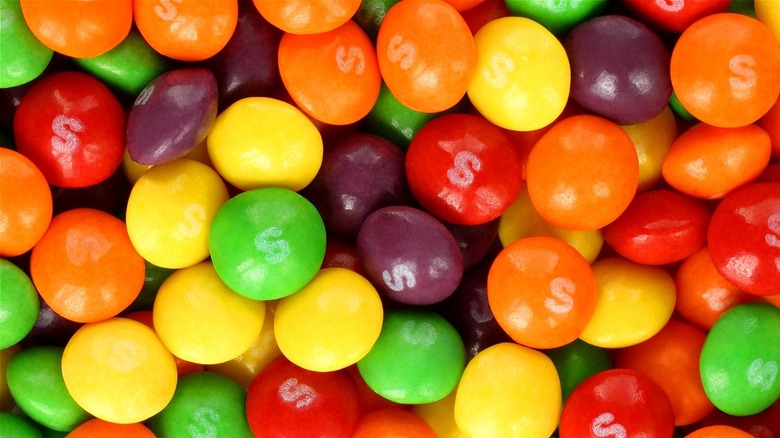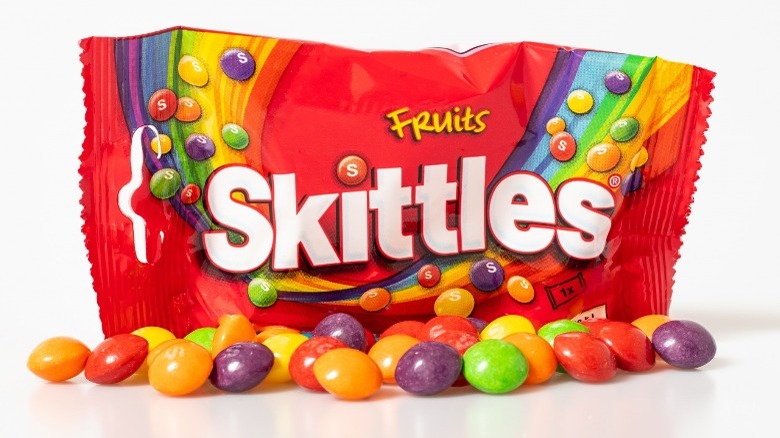Purple Skittles Taste Different In The UK And Sweden. Here's Why
Skittles might be a popular candy in the United States but by no means are they an American invention. The fruit-flavored confection has a global customer base and that means catering to local tastes in some parts of the world to ensure they will sell.
As Vice details, candy-lovers in the United Kingdom were actually the first to try Skittles in 1974. Vice explains the word skittles had a connection in English culture to casual game-playing and a fun atmosphere at the time, so it was the perfect initial market for the creation of the Wrigley corporation. Tastessence says the candies made their appearance in the United States five years later, with domestic production starting in 1982, and Skittles have become so popular in the United States that a 2019 survey shows half of Americans who responded state they eat the candies by the handful.
The story of the rise of Skittles includes a variation made to conform to consumers' expectations and a law that aimed to eliminate a disease that infected trees.
The Skittles rainbow is quite colorful
The array of flavors in the rainbow that Skittles wants you to taste is quite diverse. As The Daily Meal points out, in places like Sweden and Skittles' native U.K., the flavor of the purple-colored candies is actually black currant and not grape like it is in the U.S. The reason why has nothing to do with the surprising reason Skittles are banned in other countries.
Atlas Obscura breaks down how in the late 20th century, black currants were completely foreign to many Americans. That's because decades prior, the United States government banned the fruit nationwide. At that time, the plants that bore the fruit had to be imported and many of them were carrying a disease called white pine blister rust that destroyed wood. While the federal ban expired in the 1960s, Atlas Obscura says, it was too late to save the black currant as a common fruit in American culture.
Thus, when Wrigley brought Skittles to the U.S., they modified the purple candies to taste like grapes, explains The Sun. However, the black currant flavor remains in European markets. That isn't the only example of international flavor variations for Skittles, though. Fast Company states the strawberry-flavored Skittles in bags sold in China, for example, are less sweet than the same candies in the U.S. Again, it's all about localized flavor profiles. If you buy a bag of Skittles on international trips, don't be surprised if the rainbow tastes different.

